‘Suspended in Time’ is a solo presentation of recent work by Welsh artist Caitlin Flood-Molyneux opening in central London on Monday 3rd April.
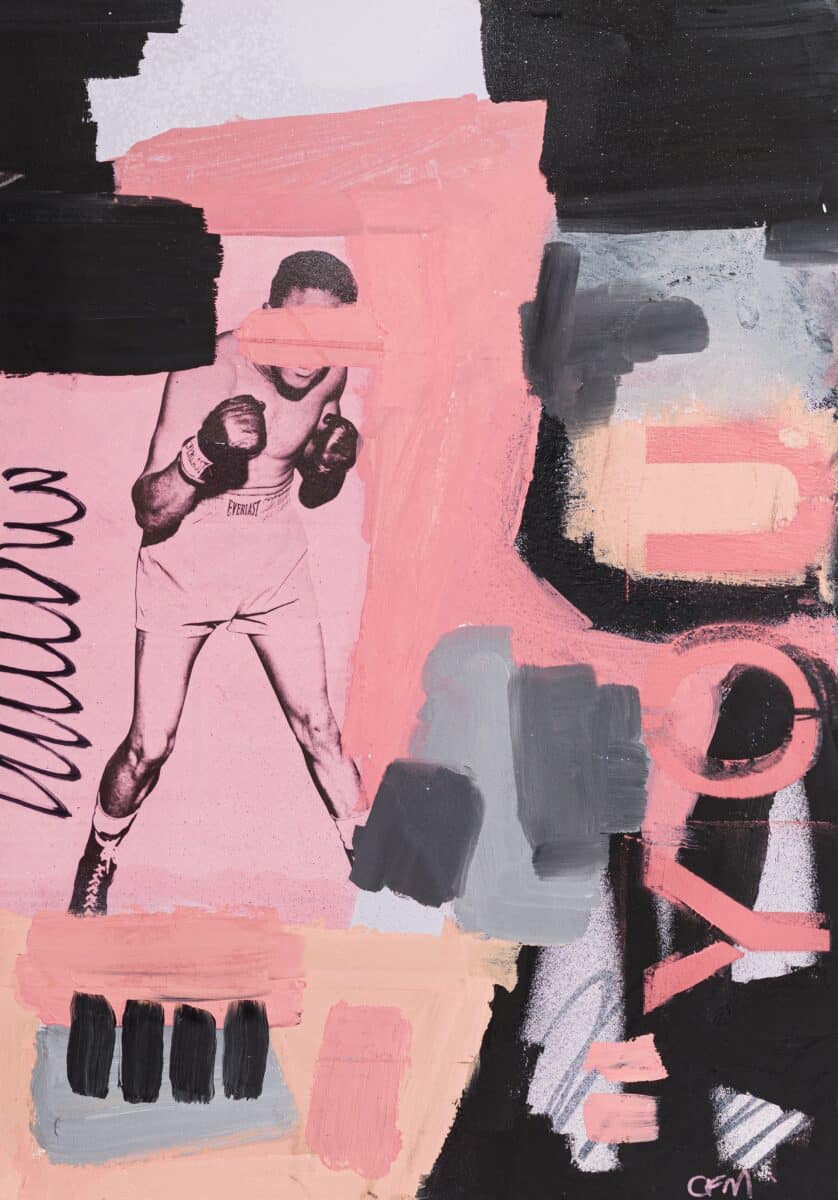
Caitlin Flood-Molyneux’s artwork offers a powerful reflection on how we relate to our memories, particularly those shaped by trauma, loss, and love. Flood-Molyneux’s unique artistic practice combines found imagery with abstract painterly forms, resulting in a visual language that reflects the way we connect with our past experiences.
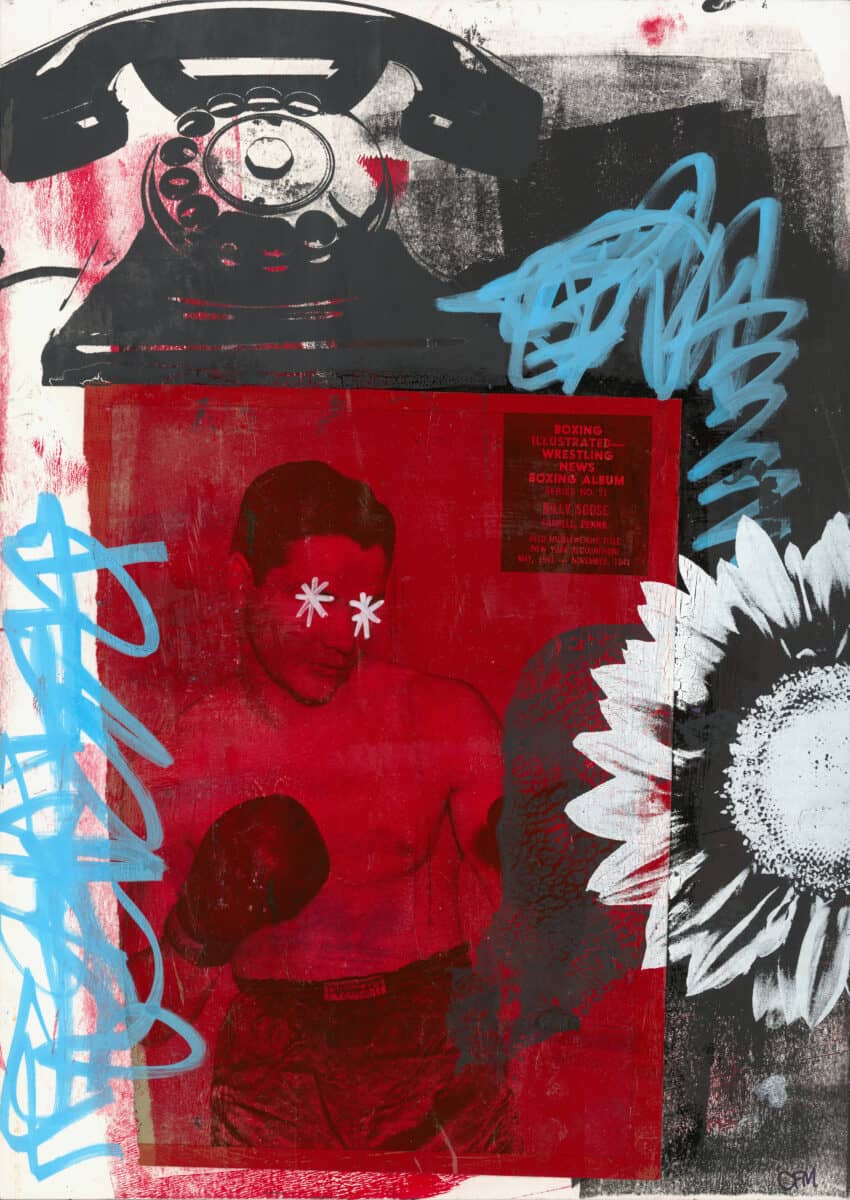
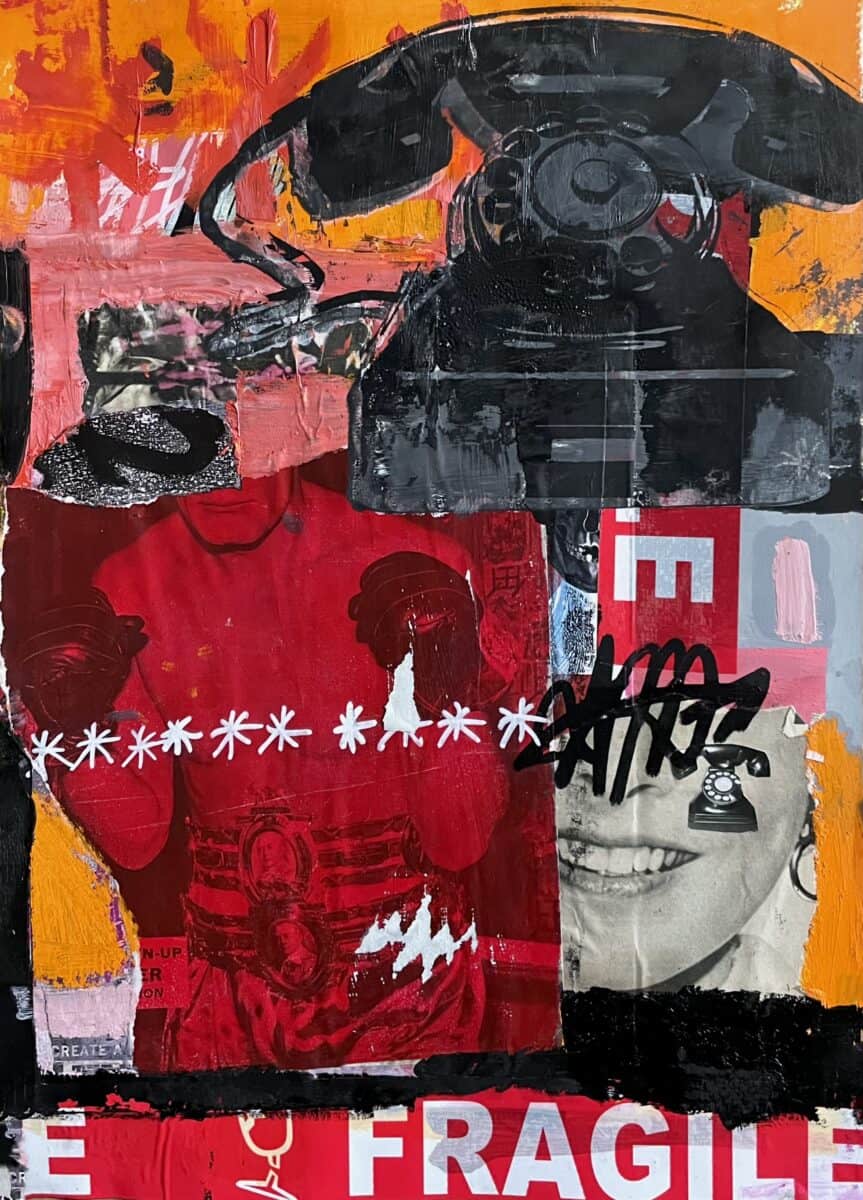
Flood-Molyneux’s work is highly personal and universal at once; accessible to many through its use of iconic imagery and playfulness. It charts key moments in the artist’s life; a private and enigmatic story visualised in works on paper, collages, and paintings.
About the artist
Caitlin Flood-Molyneux is a contemporary Welsh Artist based in South Wales. Their artistic practice investigates the relationship between pop culture imagery and the way in which we attach emotion and memory to images and use this to narrate their subjective experiences of hardship. Developing from the visual styles of DADA and early Pop Art, the combination of found imagery alongside abstract painterly forms allows them to develop their own visual language. Their use of historical imagery is important, as it embodies the memories which the artist seeks to portray. Their work is both deeply personal and universal, as it charts key moments of their life; a private and enigmatic visual story with which Flood-Molyneux invites the viewer to forge their own connection.
The process of production often begins with collage, taking physical cutouts of imagery that provoke emotion and memory, before recontextualizing them to relate to the artist’s experience. These composed scenes are painted upon with a range of media from oil paint to aerosol. The destruction of the images with this new media is the moment of creation, as these painted gestures allow the artist to express the emotions unearthed by the scene and figures. From love and loss to grief and anger, the reflective experience of creation allows Flood-Molyneux to channel these emotions into their work in a deeply expressive fashion.
These works allow both viewer and artist to muse upon the past as one would when reminiscing to the sound of a nostalgic song, an initially faint memory becomes a vivid recollection. The artwork should be perceived not just as a visual entity, but also as an opportunity for reflection.
What role can art play in dealing with grief and trauma?
Words Leo Sartain, 22/03/23
Art has always played a role in telling stories, from ancient cave paintings, to stain glass windows and cartoons. It has offered a way for the masses to learn and understand the tales of the times. The Welsh artist Caitlin Flood Molyneux looks to subvert this tradition in their work. Their art has developed over the past few years to mirror their own experiences, visually they have developed a personal visual language that allows them to discuss and deal with the loss, trauma and grief that have been present in their life. A combination of collage, abstraction and layering allows the artist to investigate the emotions and experiences that are confronted in the studio. Grief and trauma have diverse ways of affecting us, and we have different ways of dealing with them. Caitlin utilises their art practice as a tool for dealing with grief, personal demons, and life in general, read on to learn how this came to be.
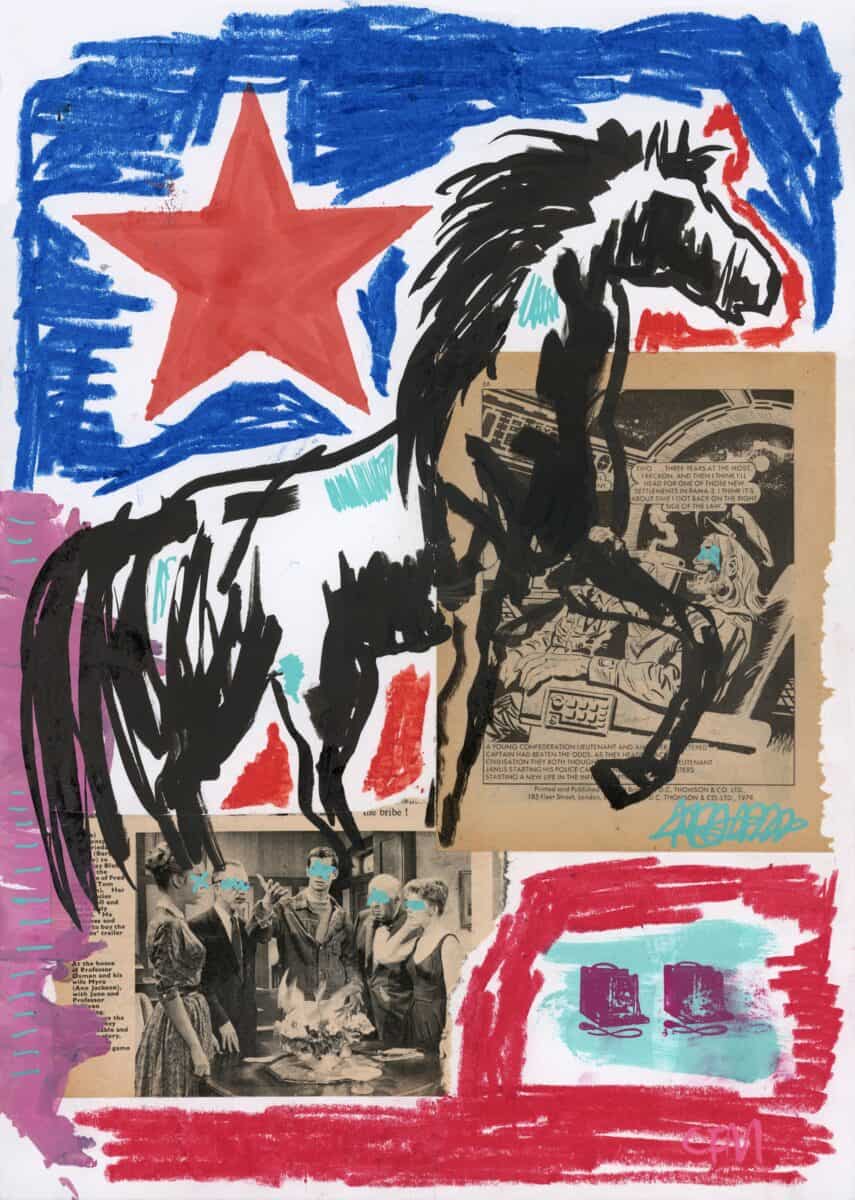
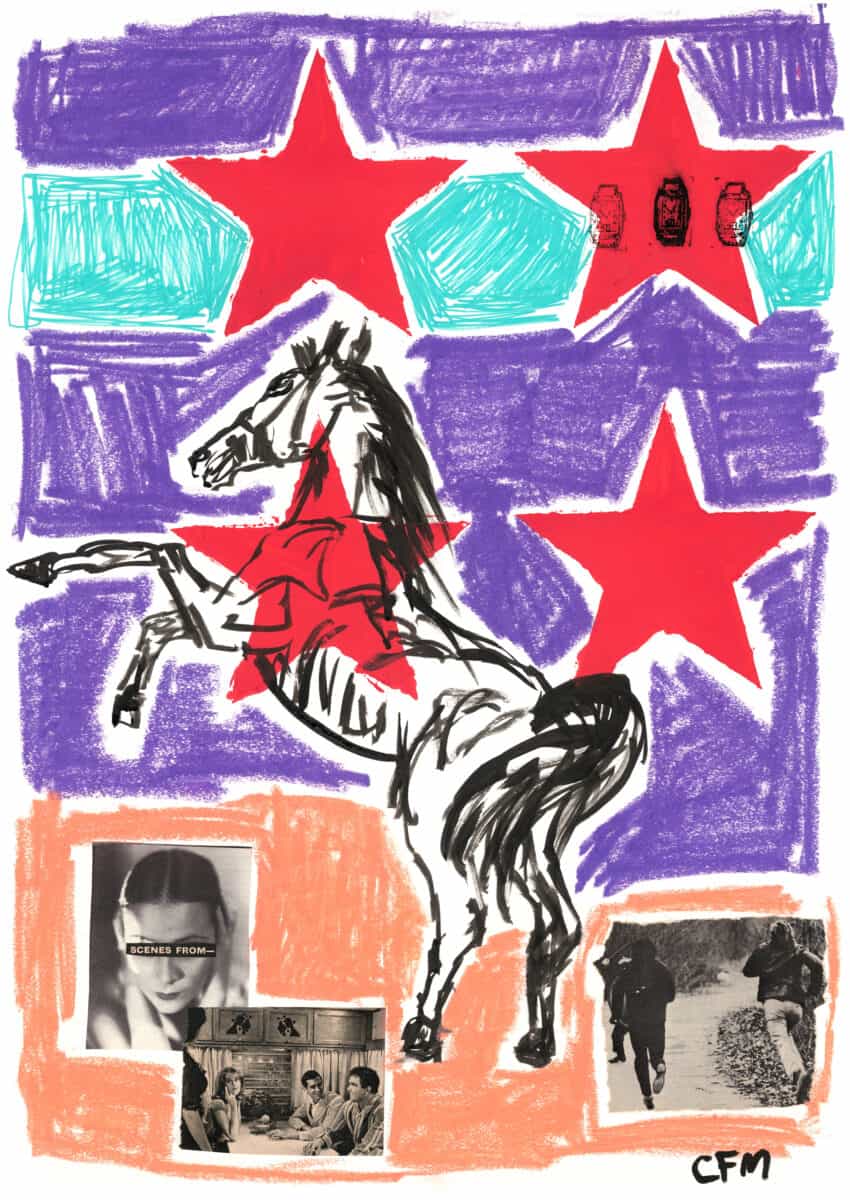
Perhaps unlike a lot of other parents, Flood Molyneux’s couldn’t have been happier for them to pursue a career in the arts, with their mother being a keen artist throughout their upbringing but having to devote her time to being a staff nurse, the reality of pursuing a full-time career in the arts wasn’t possible. Despite this, Caitlin remembers their mother saying, ‘I paint beautiful pictures in my head every day’, this is something I am sure many artists can relate to and is a memory that became a driving force for Caitlin. An initial interest in painting as a child developed into the start of a degree in graphic design before soon realising, they craved the more hands-on painterly experience of Fine Art. Their early paintings tended to reflect their immediate environments, being surrounded by the Aberdare mountains in South Wales, there was an obvious draw to depicting these romantic landscapes, in time Caitlin realised it was more about their feelings and the emotions provoked while being in the landscapes rather than the views themselves. This was the start of using the medium to reflect their inner self.
A chance decision to join the Erasmus scheme while studying took the artist to Norway for a year, a far cry from the rural slate grey surrounds of the Welsh valleys. This urban experience of the busy, colourful Norwegian cityscape opened their eyes to a more cosmopolitan style, with graffiti and street art soon becoming a clear influence in their work. It was in these walls of graffiti that the artist began to pick out individual elements that provoked sensation, whether the memories called up be positive or negative, it was that moment of connection that was the key. The initial awareness of symbols and glyphs that they felt connected to developed into an almost hoarder-like tendency to collect items and images that had sentimental value or triggered an emotional response. Items such as old magazines now became libraries of icons and images that could add to the artist’s visual language. When asked what made the artist want to collect something, they responded that ‘it had to provoke a response, a personal recollection, or a reference; simply being beautiful or cool just didn’t cut it.’
An increasing awareness of the significance of symbols encouraged the artist to delve into the traditional role of subjects and symbols in art history, something that then allowed them to play with and break classical values. Over time, Flood Molyneux explains that they developed their visual language so much that it soon became almost like a dictionary, one that allowed them to discuss specific themes and moments in their life. These identifiers are clear and understood by the artist, but when seen by the viewer in one of the artist’s painterly, abstract compositions, are an enigma, ensuring the artist’s intentions are not made clear but instead offer a platform for the viewer to form their own connections.
The combination of abstracted and figurative elements in the artists’ work isn’t a planned happening, with the artist relying on a more subconscious process in the studio, entering a mindful state that allows them to deal with the personal, often difficult feelings that plague us all.
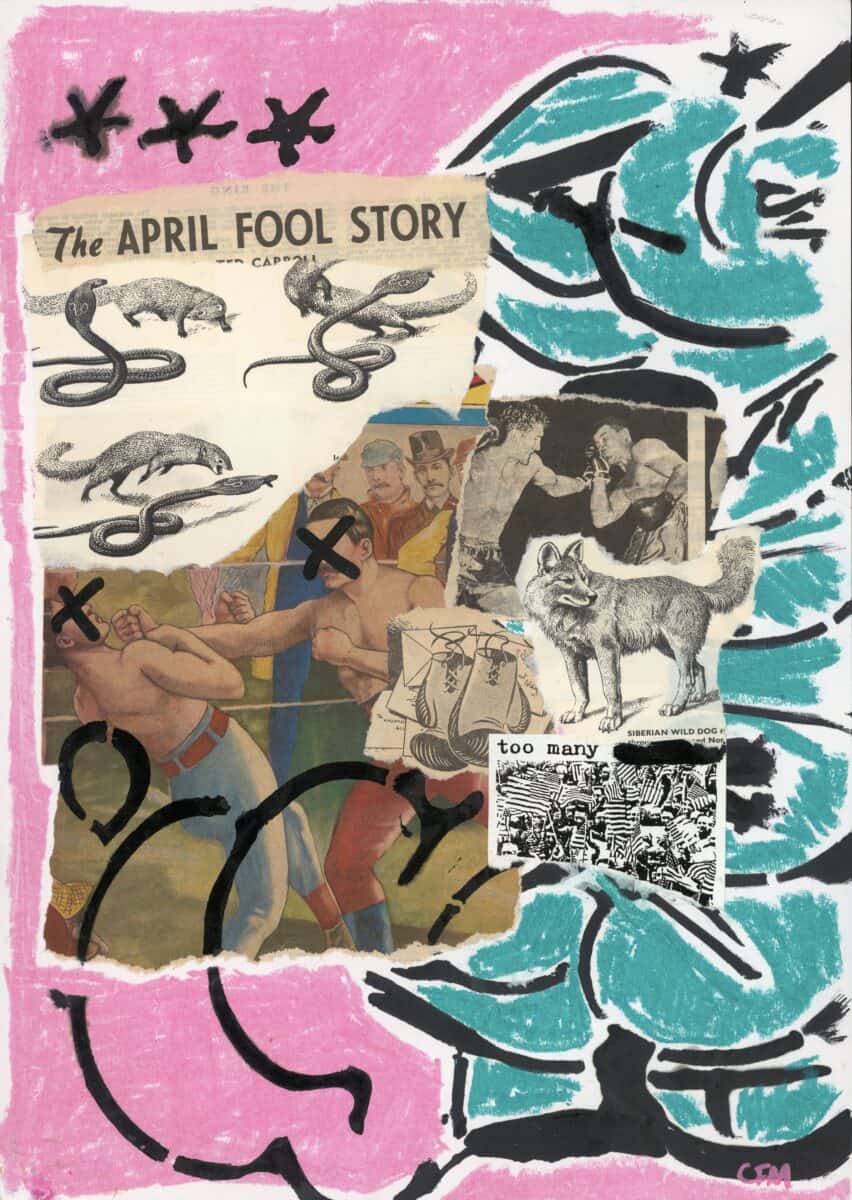

It wasn’t always this way, Flood Molyneux mentions that while studying in their third year, they hit a creative block, trapped by their expectations and those of others. The pervading desire to create work that was well received but also that which truly reflected the artist became such a struggle and combined with personal battles led to the artist searching for a new direction. That direction was to look back, back to younger artwork, where the pressures of gallery sales and competing in the market weren’t a bother, where they were carefree and without the emotional turmoil that they had endured. Taking elements of their previous graphic design and screen-printing practice allowed the artist to adopt these older styles with new skills and experiences to create something new. The linking of past and present is regularly seen in the artist’s work whether in subject matter or source material, taking elements from a vintage magazine that provokes memories from the past and combining them with abstract painterly elements that reflect and respond to the immediate emotional tumult the artist experiences allows for a unique alchemy to take place on the canvas.
When asked what they felt was important for artists, Flood Molyneux responded ‘taking risks…you have to take risks and not care too much. It is about the process and sensation of painting, not the finished element for me.‘ This risk-taking did not come naturally to the artist but is a result of a greater confidence in their work, having dealt with the pressures of social media that can eat away at self-belief and now utilising the work as a personal tool for coping with life. This process of dealing with life is one that now comes hand in hand with making art. When producing work, the artist is often working out emotions or unanswered questions, often putting to bed a trauma that exists and releasing the inner tension that these can create. These moments of clarity can only be achieved when the artist is in the studio, allowing the paint to flow freely and creative decisions to become automatic. When asked if great art can come without suffering they replied ‘Yes, of course, it’s what you do as an artist that matters, not what causes it. For me, art is a tool to deal with my struggles, but I don’t like this to be clear in my work. There is a contradiction in my work, in that they are often very bright and energetic but to me, they tell a different, often darker story.’
A large part of the story the artist often tells is that of the loss of their mother, whose lifelong enjoyment of art and unwavering support of Caitlin to pursue a creative career has become a driving force for them. This loss is purposely not made clear in their work, preferring for the viewer to make their own connections. For the artist, being in the studio and producing art is a way of communing with their mother and honouring her memory. It is an experience that allows the artist to be happy and banish the darkness that could so easily consume. The process of becoming an artist has given Flood Molyneux hope and purpose; art was always present for them and in the face of struggles it became the tool of choice for coping with them. The artist describes grief as ‘ like carrying a pile of bricks, as times goes on, you can carry it a bit easier, but you’re still just carrying it’, this understanding of grief allows art to take the role of a sherpa, diligently helping to carry the burden whenever called upon.
To look at Caitlin Flood Molyneux’s work is not to read the personal diary of someone who expels trauma and loss on the canvas, the work is often bright, colourful, and filled with recognizable symbols that provoke a wide range of memories in the viewer. The artist has a unique ability to address their own suffering through the process of painting and not only make it look good but unique and interesting too.
Caitlin Flood Molyneux is having a solo exhibition in London at the Fitzrovia Gallery from the 4th-9th of April, which is titled ‘Suspended in Time’ and will be one of the most important presentations of the artist’s work to date. Go and see it and find out what sensations it provokes in you.

Caitlin Flood Molyneux, ‘Suspended in Time’, Private View Monday 3rd April, 6–9pm. No need to RSVP.
Exhibition continues to 9th April, daily 12–6pm, Fitzrovia Gallery, 139 Whitfield Street, London, W1T 5EN






